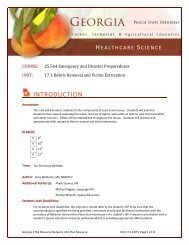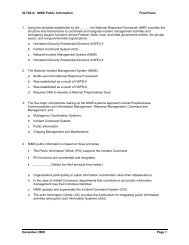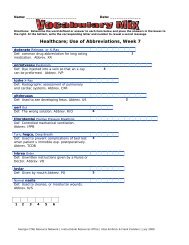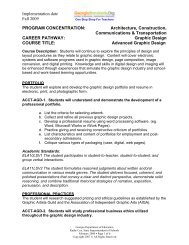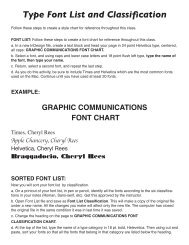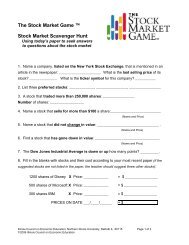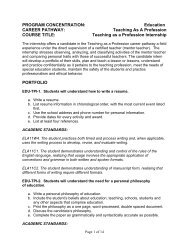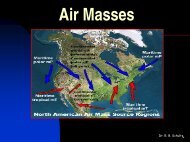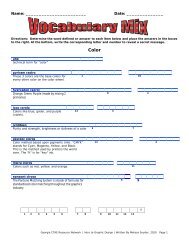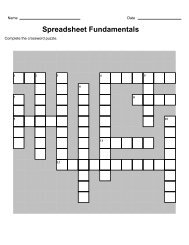emt-basic curriculum module 4
emt-basic curriculum module 4
emt-basic curriculum module 4
You also want an ePaper? Increase the reach of your titles
YUMPU automatically turns print PDFs into web optimized ePapers that Google loves.
State of WisconsinEMT-Basic: A Practice BasedApproach to EMS EducationIII.a) Crowing-upper airway compromiseb) Audible wheezing-lower airway compromisec) Gurgling-upper airway compromised) Snoring-upper airway compromisee) Stridor-upper airway compromise(1) A harsh sound heard during breathing(2) Upper airway obstruction8. Inability to speak due to breathing efforts9. Retractions - use of accessory muscles10. Shallow or slow breathing may lead to altered mental status(with fatigue or obstruction)11. Abdominal breathing (diaphragm only)12. Coughing13. Irregular breathing rhythm14. Patient positiona) Tripod positionb) Sitting with feet dangling, leaning forward15. Unusual anatomy (barrel chest)16. Nasal flaring17. Pursed-lip breathingCommon respiratory diseases – adultsA. Reactive Airway Disease (RAD)1. Asthma – occurs in acute episodes and is triggered by exposureto an irritant, resulting in inflammation and swelling of theairways, tightening of the muscles surrounding bronchi andbronchioles (bronchoconstriction) and production of mucus.Triggers include cold air, dust, strong fumes, exercise, inhaledirritants, emotional upsets and smoke.a) Signs and symptoms(1) Wheezing(2) Coughing(3) Shortness of breath(4) Anxiety(5) Tightness of the chest(6) Fever is rarely present(7) Tripod position(8) Inability to speak full sentences(9) Pursed-lip breathingb) Patient management/treatment(1) Monitor ABCs(2) Oxygen(3) Position of comfort(4) Respiratory medication administration withapproval from medical direction (albuterol,Atrovent, etc.)Module 4-14



